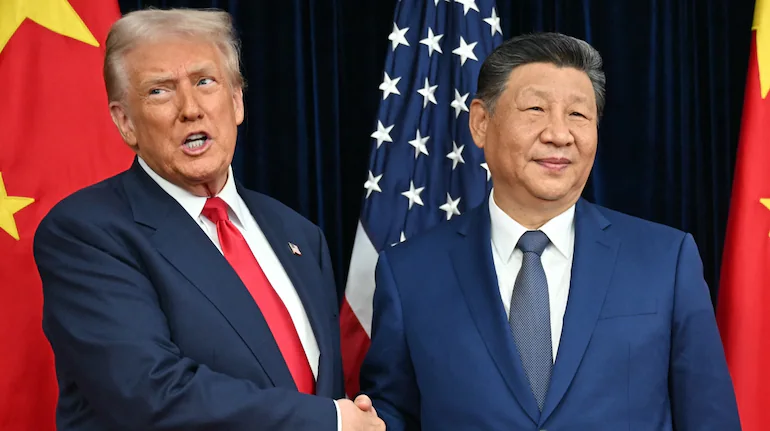U.S. President Donald Trump said Thursday that he and Chinese President Xi Jinping have reached a one-year agreement on rare earths and critical minerals, while also cutting tariffs on fentanyl-linked imports from China by half.
Speaking to reporters aboard Air Force One after the meeting in South Korea, Trump described the talks as “amazing” and said “a lot of decisions were made.”
“The rare earth issue has been settled,” Trump said, explaining that the deal will be renewed annually. He added that tariffs on fentanyl-related products will drop to 10% from 20%, bringing the overall levy on Chinese exports down to 47% from 57%, effective immediately.
In exchange, Beijing pledged to step up efforts to curb fentanyl trafficking and resume purchases of U.S. soybeans and agricultural goods, marking a partial thaw in the strained U.S.-China trade relationship.
Market reaction was mixed. Soybean futures on the Chicago Board of Trade fell 1.6%, while China’s CSI Rare Earths Industry Index rose more than 2%, according to LSEG data.
Talks Covered Trade, Chips, and Energy
Trump said the two sides also discussed semiconductor exports, noting that “a lot of chips” were on the table, but clarified that Nvidia’s most advanced Blackwell processors were not part of the talks. “They are going to be talking to Nvidia and others about taking chips,” he said.
He added that Taiwan was not discussed during the summit, which lasted roughly one hour and 40 minutes — their first meeting in six years.
Trump also confirmed plans to visit China in April, followed later by a return visit from Xi to the United States, though no specific dates were announced.
Analysts: A Surprising Breakthrough, but Fragile
The outcome of the summit has been viewed as better than expected, analysts say, pointing to the personal rapport between the two leaders.
“The results are exceeding expectations,” said Alfredo Montufar-Helu, managing director at Ankura Consulting’s GreenPoint Business, crediting “the personal diplomacy” between Trump and Xi for halting escalation and producing tangible outcomes.
Still, experts caution that major sticking points remain, including industrial policy, technology restrictions, and market access.
“While the trade truce is welcome news, it doesn’t address the deeper structural issues like China’s industrial overcapacity and state-led practices,” said Wendy Cutler, senior vice president at the Asia Society Policy Institute. “The truce is fragile, and tensions are bound to resurface.”
Xi Calls for ‘Dialogue Over Confrontation’
In a statement published by Xinhua, Xi urged both countries to favor dialogue over confrontation and to keep regular working-level communication. The two leaders agreed to enhance cooperation in trade, energy, and cultural exchanges, according to the Chinese readout.
Xi struck a conciliatory tone during the talks, calling Trump “an old friend” and saying that China’s development complements Trump’s “Make America Great Again” vision.
“It’s normal for major powers to have frictions now and then,” Xi said, adding that Washington and Beijing should act as “friends and partners.”
The mood was notably friendlier than Xi’s last meeting with former President Joe Biden in 2024, which had emphasized “inevitable competition.”
Yue Su, principal economist at the Economist Intelligence Unit, noted that while the new agreement lacks a strong structural base, both sides are likely to stick with it in the near term to demonstrate goodwill and restore communication channels.
The meeting comes amid one of the most volatile periods in U.S.-China relations in years, with disputes over trade, technology exports, and industrial controls. Washington has recently floated new restrictions on software-based exports, while Beijing imposed fresh controls on critical materials.
Yet this latest accord — centred on rare earths, fentanyl enforcement, and agricultural trade — signals a possible pause in hostilities and a cautious reopening of dialogue between the world’s two largest economies.

